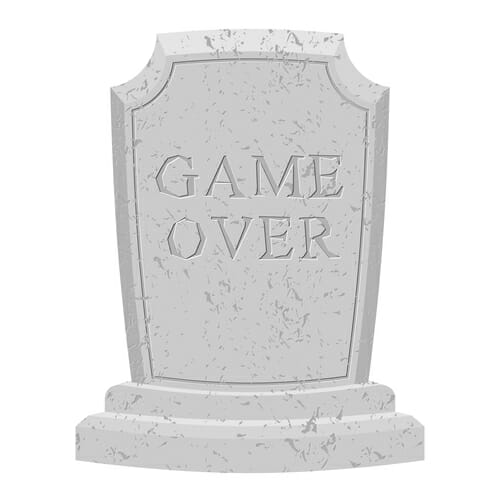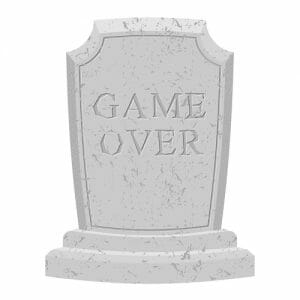{7 minutes to read} Newsflash…you’re going to die. Don’t take it personally. Your kids are going to die, too, and your parents, and your spouse—and me, right? Death happens to all of us. Many of the questions that I get as a Trusts and Estates attorney are questions about funerals. What are the choices, and do your wishes belong in your Will or not?
Let’s spend a few minutes to address some of those questions here. Burial/ Cremation? Turned into soylent green? I’m going to try to present this information in a way that is helpful (and perhaps even humorous) in the hope that my readers will become a bit more comfortable with the subject matter. Or maybe you think I’m a tasteless jerk, in which case, don’t worry—I’m going to be dead eventually. If you outlive me, chalk it up to karma.
What choices are available to dispose of my remains?
It seems like there used to be just two choices: either burial or cremation. But now there are so many varieties of those choices that I think it’s worth noting a few of them here. Let’s take a look at the more traditional ones as well as some of the newer choices.
Burial is a very popular choice. In order to arrange a burial, the person in charge (discussed below) needs to make some important decisions. Most notably, what happens to a body before the burial? Is the person going to be embalmed and laid out in an open-casket wake (or similar service)? Or is there going to be an immediate burial without embalming? A lot of the decision-making in this process revolves around the person’s individual religious and spiritual beliefs. Sometimes there is an environmental concern; many people do not wish to be embalmed knowing that burying an embalmed body in the ground is not the most environmentally friendly thing to do.
A very vivid memory I have from 2006 is a group of fellow T&E attorneys sitting around a polished, large firm conference table for a continuing legal education seminar when an undertaker came in to speak to us attorneys about choices clients could make with their cadavers (this is what we call a person’s dead body once it is prepared for final disposition). I thought that the topic was interesting, given that many of my clients want to discuss this with me. The 12 other Trusts and Estates attorneys seated around that polished, conference room table were also interested, smiling and eating their tuna fish sandwiches while an undertaker described some of the processes involved. I didn’t eat during this part of the lecture (but, in fairness, I don’t enjoy tuna fish).
I suppose we, as Trusts and Estates lawyers, are not necessarily squeamish when it comes to this topic—at some point, without death, we would all be out of business. However, everyone at the table and I were grateful to learn that sort of information in order to help us better educate our clients. And we learned to get over our squeamishness.
There’s also the issue of the coffin or casket. There are choices that are more expensive and less expensive—and again, since we are putting a coffin into the earth, this is an opportunity to choose something that is more or less innocuous to the environment. Another thing to consider: Are there going to be religious services? Non-religious services? Some sort of memorial or celebration of life? And is the body going to be present? These are things that the family member would arrange with the undertaker in advance. For those people who wish to be environmentally conscious, there are such things as green burials. A green burial involves wrapping a non-embalmed body in a sheet and burying it directly in the earth, without a casket. Currently, there are only a few jurisdictions that allow this (some communities in upstate/western New York allow this). So it’s important to plan in advance.
Cremation is becoming increasingly popular. Why? Well, some people are concerned with the cost of a burial which is easily 8-10 times higher than the cost of a cremation. Also, some people do not believe in taking up space. I call this “the New Yorker mentality.” I always tell myself, “Tom, no matter how many people love you, eventually they are going to stop visiting your gravesite.” Unless I wind up being the next Jimi Hendrix or John Lennon, that’s probably pretty inevitable. I don’t know about you, but I’ve walked down streets in Manhattan and seen a small 300-year-old cemetery sandwiched between two luxury condos. It does not make much sense to me, but that’s just my opinion. To each his own.
In order for someone to authorize a cremation, the deceased’s wishes to be cremated need to be clear and/or an authorized next of kin must make that decision for them. The big question with cremation is what happens to the ashes. Sure, it’s possible to get them put into a decorative urn for a family member to keep as a memory of the deceased. There are some people who wish to have their ashes scattered, and scattering is very popular—however, there are restrictions on how a person may dispose of ashes. Many things such as scattering them in a park or into a body of water require a permit, as does bringing them on an airline. These are some of the considerations to begin thinking about.
Lately I have witnessed more and more of my clients showing interest in the idea of cadaver donation. What is cadaver donation? You’re probably familiar with the concept of organ donation, in which a recently deceased person can donate their usable organs for purposes of transplant, potentially saving someone else’s life. A cadaver donation is a way that a person can donate their entire cadaver to a medical school for research and study. What happens during this research and study?
The medical school will take the cadaver and medical students work on it generally for up to two years. They can use it for various purposes, from anatomical study to testing new therapies and medicines, etc. One of the attractive things about this is that a person may contribute to someone else’s knowledge, education, and even the advancement of medicine in general. Another nice thing about this is that the medical school pays all of the undertaking costs. And at the end of the study period, the medical school will cremate the remains at their own expense. What happens to the cremated remains? Generally the medical school will give you three choices:
-They can give them to whomever you wish, and you can designate before hand.
-They can scatter them at sea and give any person that you’ve designated a certificate commemorating that.
-They can often bury them in a niche in a communal burial plot maintained by the school.
Many medical schools often have an appreciation ceremony for the families to come and hear about all of the wonderful things that their loved one’s donation has provided, and often medical students who have worked with the cadaver come and meet the family.
Again, this is just an overview of the different choices available for one’s cadaver. More and more choices become available everyday, and an educated client can really tailor their wishes to best suit their personal beliefs and values.
How does a person express his wishes concerning these choices?
Well, there are a few great ways. First, a person who’s so inclined can prepay their final expenses by going into any funeral parlor within the State of New York. By doing so, they will make all of these decisions while prepaying them, and they are ensured that the undertaker will follow their wishes. Another great way to do this is to put it in their Wills. Third, if a person wishes to become a cadaver donor, they can sign donor cards during their lifetime to arrange that. Contact your favorite or nearest medical school and they will be more than happy to send you the cards. Finally, a person can sign a document separate from the Will called a Funeral Directive (Appointment of Agent to Control Disposition of Remains), where the client would make their wishes known and also select the person who is in charge of making sure that those wishes come to pass. Discuss these choices with your trusts and estates attorney.
If a person hasn’t provided for any of these wishes, family members are charged with making the decisions, starting first with the spouse or domestic partner, and followed by parents, and adult children, respectively. Many people are comfortable delegating these decisions to family members, but it is essential to tell your family members what your wishes are—or you could leave them scratching their heads.
If you’d like to discuss this conversation more, please give me a call at the office.
PS – for those either too young (or simply too refined) to get the Soylent Green reference in this article, check it out here. Did you know that’s what the writers envisioned NYC to look like in 2022 – just FIVE YEARS from now? Yikes!


